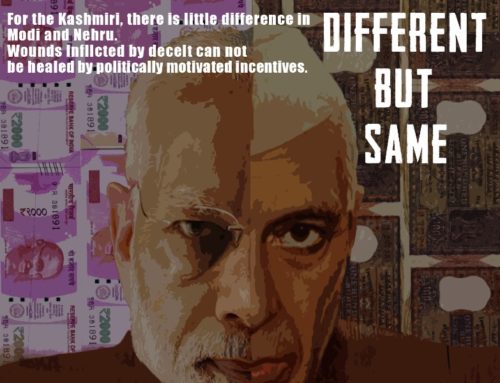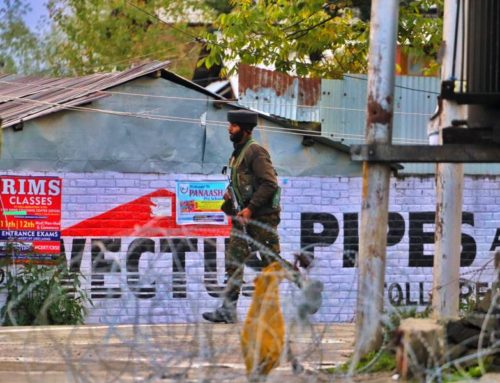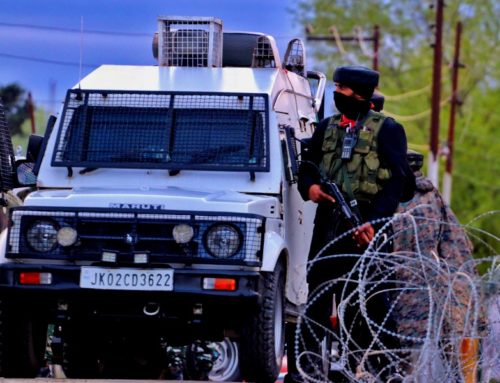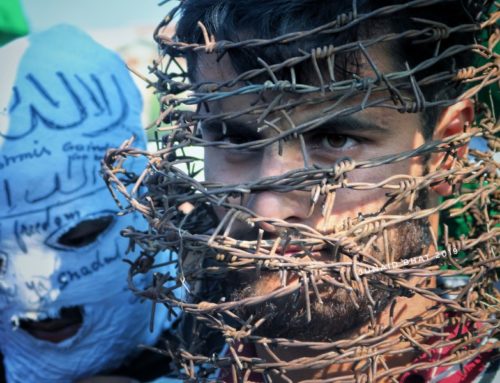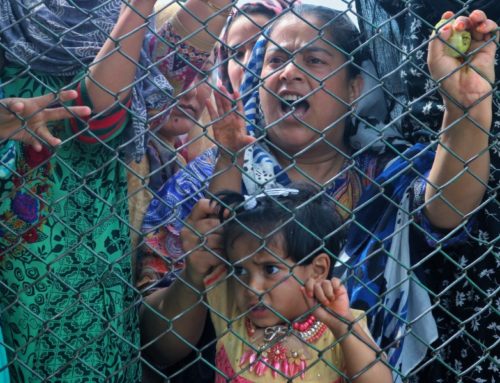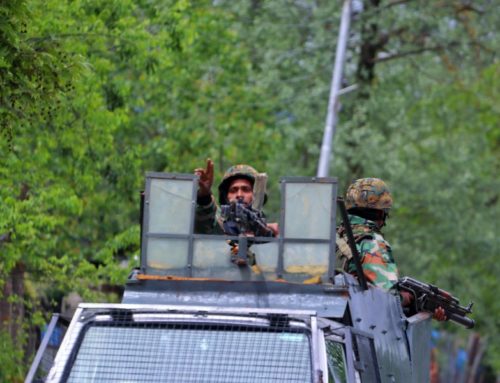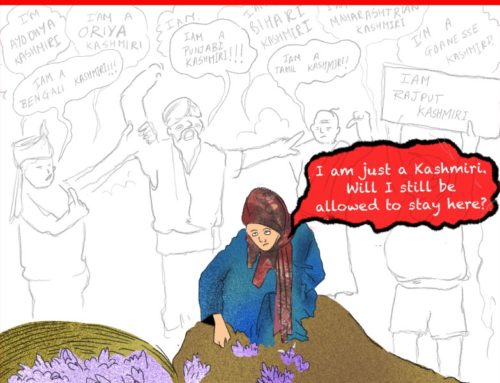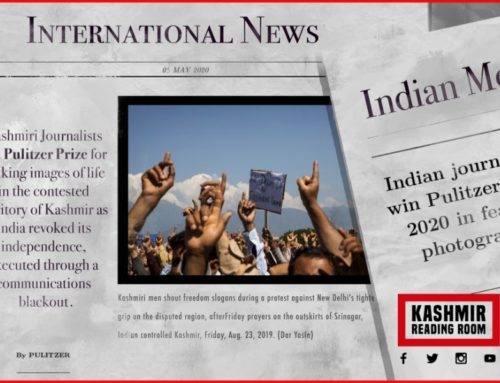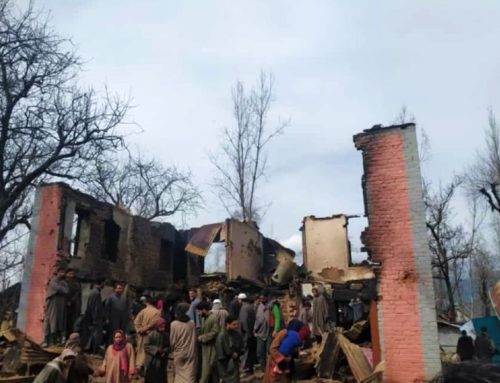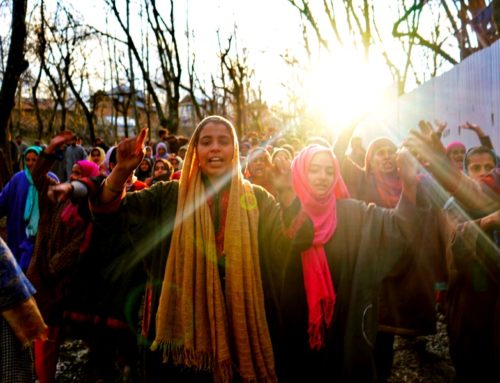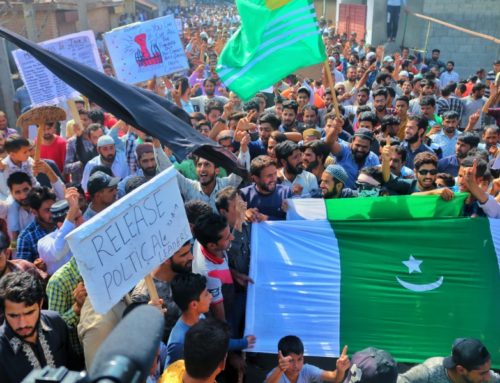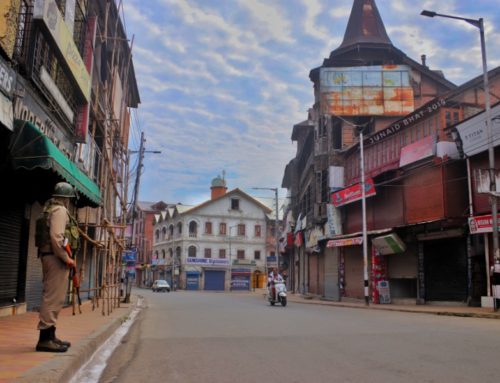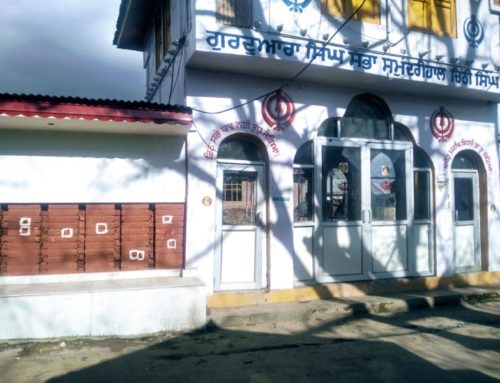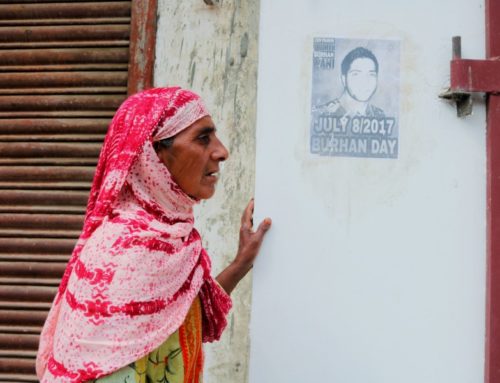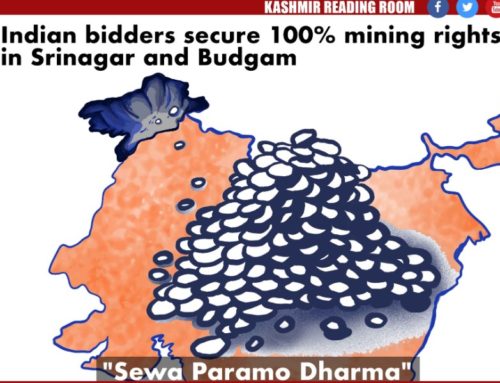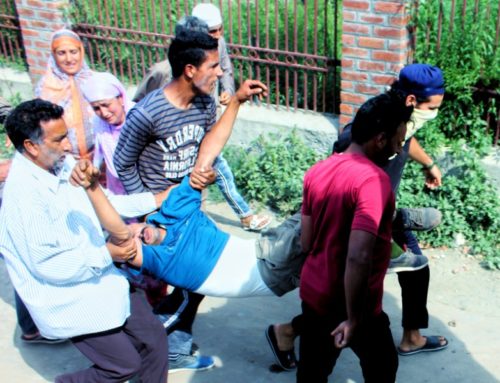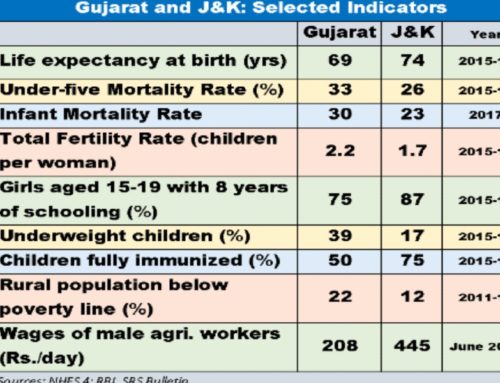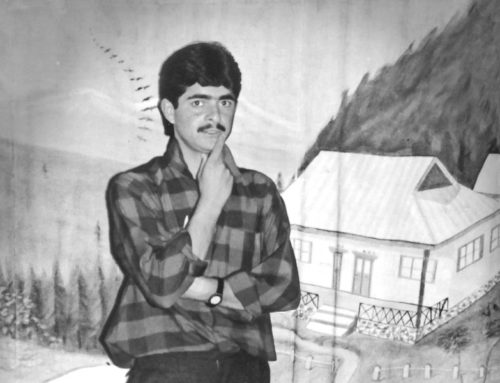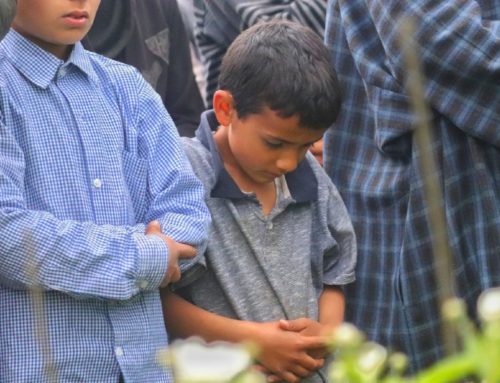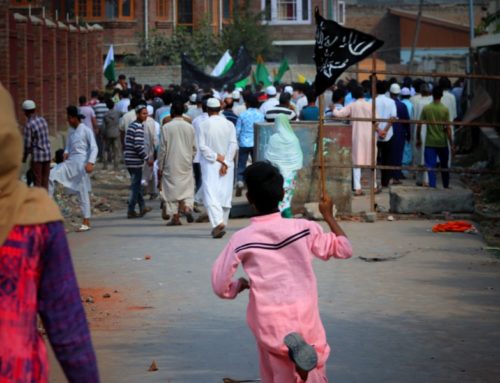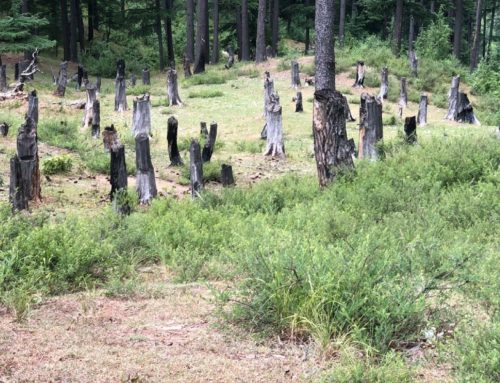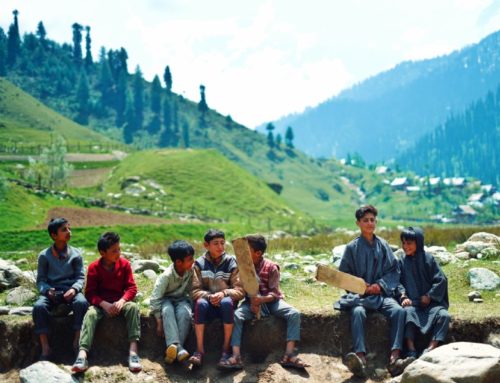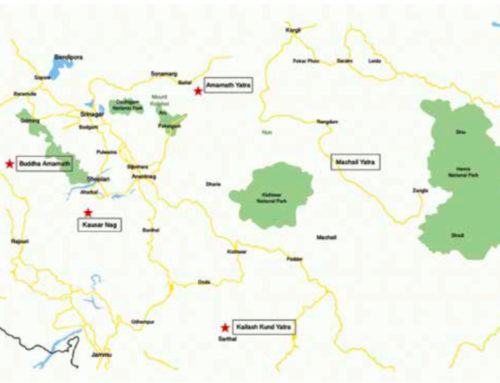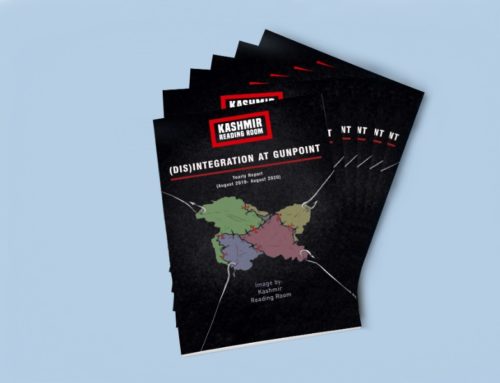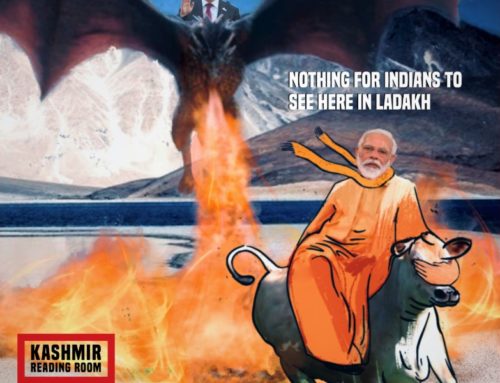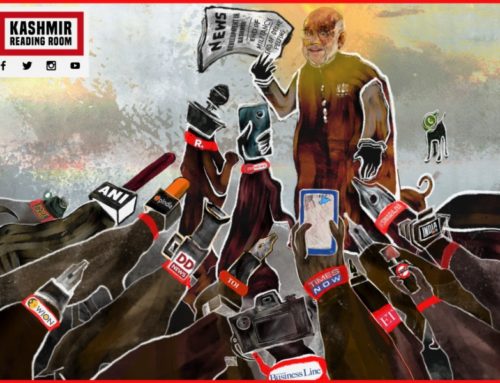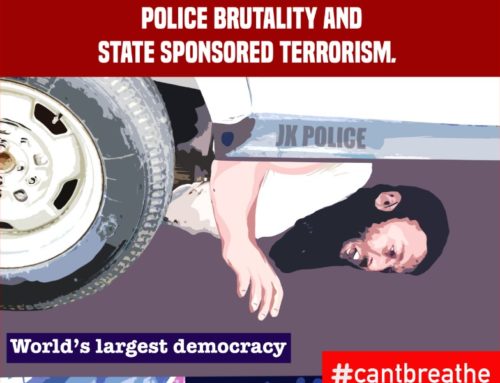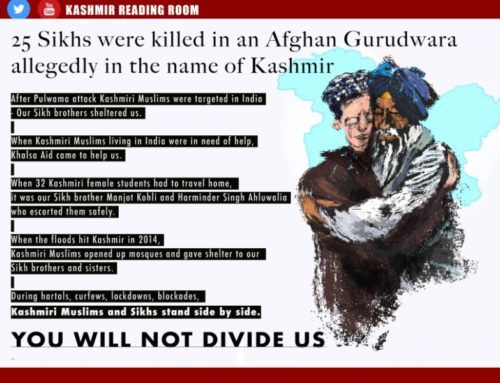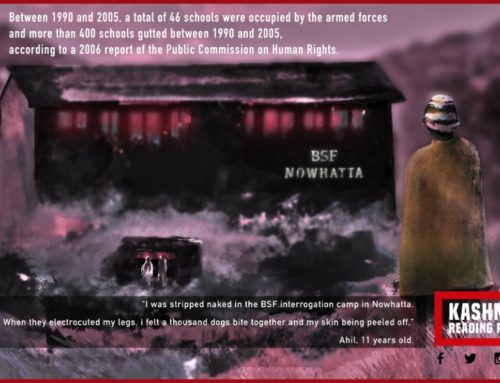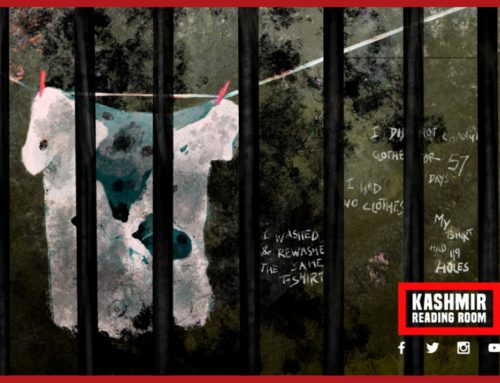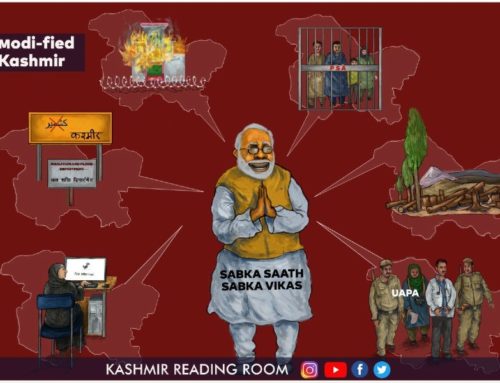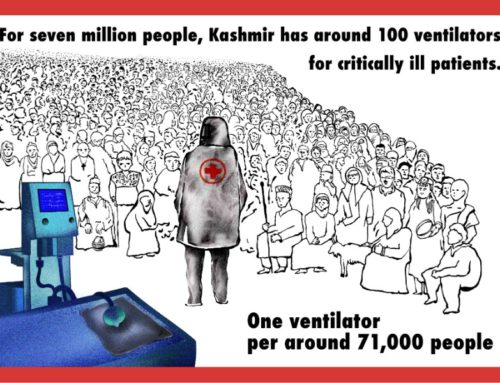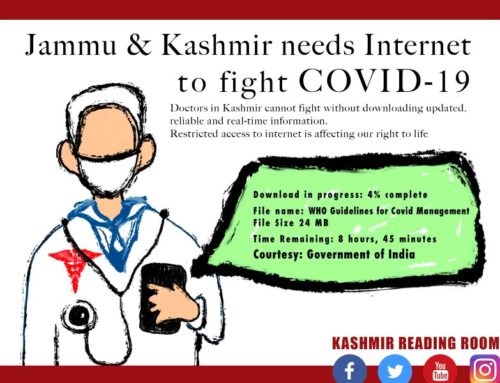Attacks on Religious Places of Minorities
Post Abrogation of Autonomy
Arman Kazmi
Introduction
The year 2020 witnessed a different world, and the world a different year. The measures introduced by governments around the world brought about a huge change in people’s lives. Around the world, people found it difficult to cope up with new norms of lockdown. However, there was a place, where this lockdown was not a change but routine affair – Jammu & Kashmir (J&K). In J&K, it served an extension of an already existing and, in fact, much worse lockdown imposed by the Indian state since August 5, 2019, when the state de-operationalized Article 370 of the Indian Constitution. The marker of the lockdown which Kashmir shared with the world was not just the cases or deaths caused by Coronavirus but encounters, civilian killings, destruction of properties, codon operations, harassment of journalists, suspension of telecom services etc. According to the Bi-annual report of human rights situation in Indian administered J&K prepared by JKCSS and Association of Parents of Disappeared Persons (APDP), there were at least 229 killings in different incidents of violence. These six months witnessed extra judicial execution of at least 32 civilians, killing of 143 militants and 54 Armed personals. The report mentions that at least 48 houses were damaged in the first half of this year rendering a large number of families homeless during the Corona lockdown.
Besides these, there has been the issue of attacks on religious places in Kashmir raising questions about the safety of minority faith and practices in Kashmir.
Attacks on Religious Places
- 6 religious places were attacked in the months of May and June 2020 in Srinagar.
- On May 15th, a petrol bomb was hurled on Az Zahra Islamic Centre, an Imam Bara in HabaKadal.
- On May 17th, Amar Koul temple in Badamwari was attacked with Petrol Bombs.
- On May 19th, Masjid e Imam Ali & Astan e Agha Jaffer were attacked with Petrol Bombs.
- On May 30th, unidentified burglars broke into Kalvi Dhar Gurudwara at Jawahar Nagar, Srinagar and decamped with cash and other valuables.
- On June 5, the Shrine of Babul Hawaij Imam Musa Kazim was attacked with a Petrol Bomb. The shrine houses the manuscript of one of the oldest written Quran in the valley written by Imam Musa Kazim, great grandson of Prophet Muhammed.
- On June 19, unidentified burglars broke into Ziyarat e Khanqah e Mir Shams-ud-din Araki in Zadibal.
Besides the attacks in Kalvi Dhar Gurudwara and Khaqnqah Mir Shams ud Din Araki in which the apparent purpose was burglary, in all the other cases the purpose remains suspicious. All four attacks show a lot of similarity in their patterns. Firstly, all these religious places belong to minority faith/sect. Secondly, all these religious places are in Srinagar. Lastly, in every attack the petrol bomb was hurled at night in densely populated areas when valley was under a lockdown.
Community reactions after the attacks
Following these incidents, the religious leaders from all the groups and communities condemned the attacks and asked people to maintain unity and harmony in these difficult times. Maulana Masroor Abbas Ansari, a religious leader of J&K Ittehadal Muslim, in an interview to the local daily said, “the pattern of these attacks shows a coordination. The aim is clearly to create a discord among the religious communities”.
Following these attacks, Jammu & Kashmir Anjuman e Sharie e Shian organised an interfaith dialogue in Kashmir, in which people from all the faiths and sects participated. In this dialogue, a joint resolution was passed that unanimously condemned the recent attacks on various religious places in Srinagar and urged for unity among all communities.
FIR was filed at several police stations about the attack on Chattabal Shrine mosque in both Kadal and temple in Badamwari. Despite the pattern, the police said that there is no link between the events and claimed that the suspects are mischievous individuals with drug addiction. Although, they have given no reason for this claim. Why will a drug addict risk his life and only attack religious places of minorities in densely populated areas? Most residents considered these attacks to be a ploy of ‘some agency’, a euphemism for various intelligence agencies operating in Kashmir to torment sectarian strife.
Tormenting Sectarian Strife
These mysterious attacks on religious places raise questions around the purpose of this attack and safety of minority communities in J&K. The residents as well as religious leaders of minority groups blamed ‘agencies’ of causing a sectarian divide among the people and portraying a picture of Kashmir where minority communities are under attack. These claims are not mere conjectures. People in the valley have strong reasons to believe this given the turn of events in 2019.
In pursuance of its project of ‘Hindutva’ in Kashmir, the BJP government has tried to create a narrative in which majority Muslims (Sunni Muslims) are made to serve as symbols of terrorist violence, fundamentalist religious impulses and sedition. Their attempt is to reduce Kashmiri Muslims to a symbol of Islamic terror both within the Indian nation and for minority communities in Kashmiri that BJP alone can defeat.
The BJP started its Lok Sabha election campaign in Kashmir under the same banner. They talked about the rights of Pandits and Shias in Kashmir. As this was their only chance to make some political gains and woo Muslim votes in the valley from a community that comprises about 14% of the population in Kashmir.
It is reported that BJP office bearers conducted a survey before the Lok Sabha elections in 2019, pertaining to various religious and ethnic sects in Kashmir. The survey carried out a profile of the Shia population at district and village level.
To gain sympathy and support from Shia voters, Ram Madhav, the National General Secretary of BJP, in a meeting devising the party’s strategy gave special attention to the rights of the Shia community. In this meeting the issue of giving reservation to Shias and demarcation of constituencies with Shia majority was raised. The BJP leader also mentioned revoking the ban on Muharram procession and formation of a separate Wakf Board for Shias of Kashmir.
The Indian government has been trying to portray itself as the supporter of minority communities in its neighboring countries and Kashmir. The Citizenship Amendment Act was a legislative measure which was actually against the interests of Muslim community within India but was portrayed by this government as a measure to mitigate the plight of minority communities in neighboring countries. Similarly, in Kashmir, Article 370 and domicile law have been portrayed as being discriminatory against minority communities that have suffered at the hands of the majority community in Kashmir.
Religious Freedom Post the amendment of Article 370
In a controversial piece titled ‘After scrapping of Article 370 Shias in Kashmir are in a state of relief and caution’, Abhijit Iyer claimed that that Shia community are in a sense of relief because Article 370 is lifted and caution because things won’t get better for them. This contradictory claim was balanced by an assertion that the abrogation of autonomy was an opportunity for Shias to practice their religion freely again. No reason was given as to how the two were related. Post de-operationalisation of Article 370, the first part was not realized but the second part about ‘caution’ was as the situation for the community did not get any better.
From September 8 – September 10, 2019, no Muharram processions were allowed by the state. On 10th day of every Muharram, Shias undertake processions to commemorate the martyrdom of the Imam Hussain, the grandson of Prophet Muhammad. In Kashmir, major processions were banned in 1980. Since then, the Shia community has been undertaking processions on government designated routes, with certain limitations. During the Muharram following the abrogation, even limited processions were not allowed, and severe restrictions were imposed. Scores of mourners were injured as police and corps fired tear gas canisters and pellet shots on the peaceful mourners. Many boys were arrested merely for wearing black. Locals claimed that the forces abused women and misbehaved with the mourners. Even the indoor mourning sessions witnessed police interference.
While the religious rights of the Shia community were violated, the minorities of other faiths received entirely different treatment. On August 25, 2019, Janmashtmi was celebrated with high fervour in parts of Jammu, temples were decorated, and special prayers were held by the Hindus of Kashmir Valley without any hindrance from the government.
Similarly, on August 27, 2019, a 3-day Kailash-Yatra was organised in Bhaderwah and hundreds of devotees were allowed for the pilgrimage amid tight security restrictions. Police had made elaborate arrangements for the Yatra and foolproof arrangements for the pilgrims were made by security forces.
Despite J&K being a Muslim majority state, the religious rights of Muslims witnessed all forms of violations. Post abrogation, many major Muslim traditions being observed since ages were halted. Khwajha Diggar, is a congregational prayer that is held on 3rd Rabiul Awwal of the lunar Calendar at the Shrine of Khwaja Naqshband Sahab, Nowhatta, Srinagar. The tradition that was kept alive for 400 years was halted on 2 November 2019 due the indefinite lockdown.
On November 10, 2019, which marked the birth of the Prophet of Islam, people were not allowed to visit the Hazrat Bal Shrine to make special prayers on the eve of Eid-e-Milad-un-Nabi, a tradition that has been ongoing since ages.
On the other hand, even in the times of COVID-19, when the regional administration in Kashmir prohibited all social and religious gatherings in Kashmir, the Amarnath pilgrimage has been given a nod, allowing 500 pilgrims per day.
This duality in policy and biased nature of the government towards Muslims gives a clear message that the government is not impartial towards different religions and the people of Kashmir. It’s because of this biased nature that India has been categorized as a country of Particular Concern in the report of the United States Commission on International Religious Freedom (USCIRF), a report that was later rejected by Indian Government. This report observes that the situation took a downward turn in 2019.
Conclusion
With the amendment of Article 370, status of J&K being reduced to Union territory, and the new domicile law, the religious rights as well as the identity of Muslim community in Kashmir is in grave danger. There are higher chances that to counter this narrative, an atmosphere of communal tension may be created to portray people from the majority community responsible for spreading hatred and oppressing the other communities. This will also full fill the narrative BJP is trying to portray, that it’s because of the empowerment of the minority communities that Sunni Muslim of Kashmir have a problem with Delhi Policies.
By far the agenda of causing communal tensions has been defeated on ground and the minority communities in Kashmir have displayed a responsible behavior in maintaining harmony. Otherwise, in many parts of South Asia such incidents have resulted in violence and riots.
These events also place the Shia community of the valley at a very sensitive place. On one hand, they have to be cautious so that they are not made a scapegoat of sectarian politics. As a result, they have to show their loyalty towards the movement within the valley which is questioned due to their image created by BJP and other vested groups. On the other hand, they suffer an equal wrath of the state as the other Muslim communities, under this biased Hindutva Government.
References
- JKCCS & APDP (2020). ‘Six Monthly review of human rights situation in Indian administered Jammu and Kashmir (January to June 2020)’. Jammu & Kashmir Coalition of Civil Society & Association of Parents of Disappeared Persons. Retrieved from http://jkccs.net/wp-content/uploads/2020/07/Bi-Annual-HR-Report-2020-JKCCSAPDP.pdf
- Ibid.
- Singh, K (9 June 2020). ‘“Aim to create discord” : Mysterious attacks on Religious Places in Srinagar’. TheKashmirWalla. Retrieved from https://thekashmirwalla.com/2020/06/aim-to-create-discord-mysterious-attacks-on-religious-places-in-srinagar/.
- Ibid.
- Ibid.
- Supra Note 382.
- Ibid.
- Kashmir News Service (20 June 2020). ‘Burglary incident in Ziyarat Khanqah-e-Mir Shams-ud-din Araki R.A’. Kashmir News Service. Retrieved from https://www.knskashmir.com/Burglary-incident-in–Ziyarat-Khanqah-e-Mir_Shams-ud-din-Araki-R-A-47545
- Supra Note 384.
- Observer News Service
(6th June 2020). ‘Maulana Masroor Condemns Petrol Bomb Attack on Downtown Shrine’, Kashmir Observer. Retrieved from https://kashmirobserver.net/2020/06/06/maulana-masroor-condemns-petrol-bomb-attack-on-downtown-shrine/ - The Kashmir Walla (16th June 2020). ‘Anjuman- Sharie-Shian organises “first ever interfaith dialogue” in Kashmir’. The Kashmir Walla. Retrieved from https://thekashmirwalla.com/2020/06/anjumane-sharie-shian-organises-first-ever-interfaith-dialogue-in-kashmir/
- Supra Note 384.
- Ibid.
- Rai, M(2019). ‘Kashmiris in the Hindu Rashtra’ in Angana P. Chatterji, Thomas B Hansen and, Christophe Jaffrelot (eds), Majoritarian State: How Hindu Nationalism Is Changing India. Harper Collins: London. pp. 259-271
- Khalid, W (2nd April 2019). ‘BJP’s strong plans to woo Shia voters for making inroads into electoral politics of Kashmir’. The Kashmir Press. Retrieved from https://thekashmirpress.com/2019/04/02/bjps-strong-plans-to-woo-shia-voters-for-making-inroads-into-electoral-politics-of-kashmir/
- Hassan, A (29th March 2019). ‘Waqf Board, Muharram Processions and Haj Quota: BJP Eyes Shia Votes to Open Account in Kashmir Valley’. News 18. Retrieved from https://www.news18.com/news/politics/waqf-board-muharram-processions-and-haj-quota-bjp-eyes-shia-votes-to-open-account-in-kashmir-valley-2082343.html
- Mitra, A (27th September 2019). ‘After Scrapping of article 370, Shias in Kashmir are in a state of relief and caution’. The Print. Retrieved from https://theprint.in/opinion/after-scrapping-of-article-370-shias-in-kashmir-are-in-a-state-of-relief-and-caution/297510/
- Zargar, A (10th September 2019). ‘We are Reliving the Tragedy of Karbala in Kashmir’. Newsclick. Retrieved from https://www.newsclick.in/we-are-reliving-tragedy-karbala-kashmir
- Shias wear black at the occasion of Muharram to symbolise grief and mourning.
- Supra Note 398.
- Asian News International (25th August 2019). ‘Janmashtami celebrated with religious fervour across India’. Asian News International. Retrieved from https://www.aninews.in/news/national/general-news/janmashtami-celebrated-with-religious-fervour-across-india20190825061806/
- Press Trust of India (27th August 2019). ‘J&K Devotees leave Bhadarwah for 3 Day Kailash Yatra in Doda amid tight security arrangements’. India Today. Retreived from https://www.indiatoday.in/india/story/jammu-and-kashmir-kailash-yatra-bhadarwah-1592321-2019-08-27
- Qadri, I (10th November 2019). ‘Police Ban Prayers in Kashmir’s Sufi Shrines on Auspicious Days’. Outlook India. Retrieved from https://www.outlookindia.com/website/story/india-news-police-ban-prayers-in-kashmirs-sufi-shrines-on-auspicious-days/342056
- Ibid.
- Sidiq, N (6th July 2020). ‘Kashmir bans Muslim gatherings but OKs Hindu Pilgrimage’. Anadolu Agency. Retrieved from https://www.aa.com.tr/en/asia-pacific/kashmir-bans-muslim-gatherings-but-oks-hindu-pilgrimage/1900831
- Lakshman, S (10th June 2020). ‘U.S. religious reports takes note of CAA, NRC,J&K status’. Retrieved from https://www.thehindu.com/news/national/us-religious-freedom-report-takes-note-of-caa-nrc-jk-status/article31798724.ece
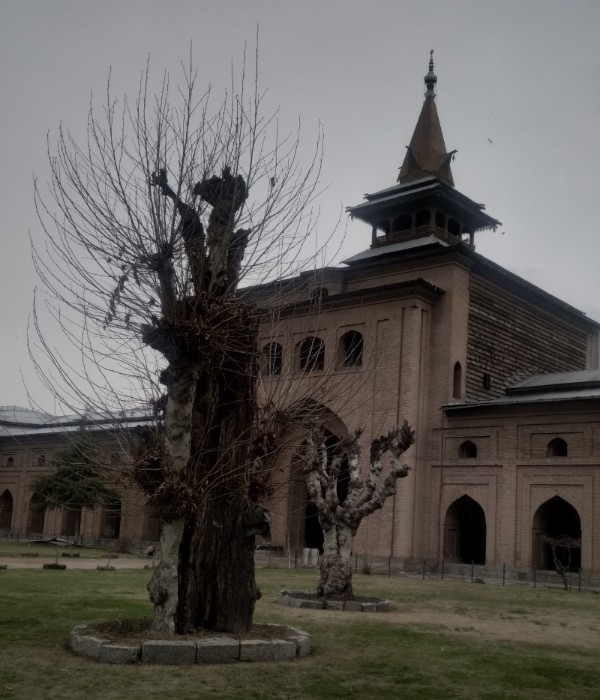
About the Author: Arman Kazmi is a student of philosophy, currently pursuing his masters from University of Hyderabad. He did his Honours in Philosophy from Hindu College, Delhi University. His research areas include philosophy of science, religion, ethics and mysticism. His interests other than philosophy include poetry and exploring the socio-political history of Kashmir.
All our work is available free of charge, if you wish to support our work by making a donation, so that we can continue to provide this vital service, please do so here.
This opinion article forms part of Kashmir Reading Room’s Yearly Report Aug 2019-Aug 2020. You can view the full report by clicking on the button below.
Disclaimer
The author(s) of every article and piece of content appearing within this website is/are solely responsible for the content thereof; all views, thoughts and opinions expressed in all content published on this site belong solely to the author of the article and shall not constitute or be deemed to constitute any representation by JKLPP, Kashmir Reading Room, the author’s employer, organisation, committee or other group or individual, in that the text and information presented therein are correct or sufficient to support the conclusions reached.

